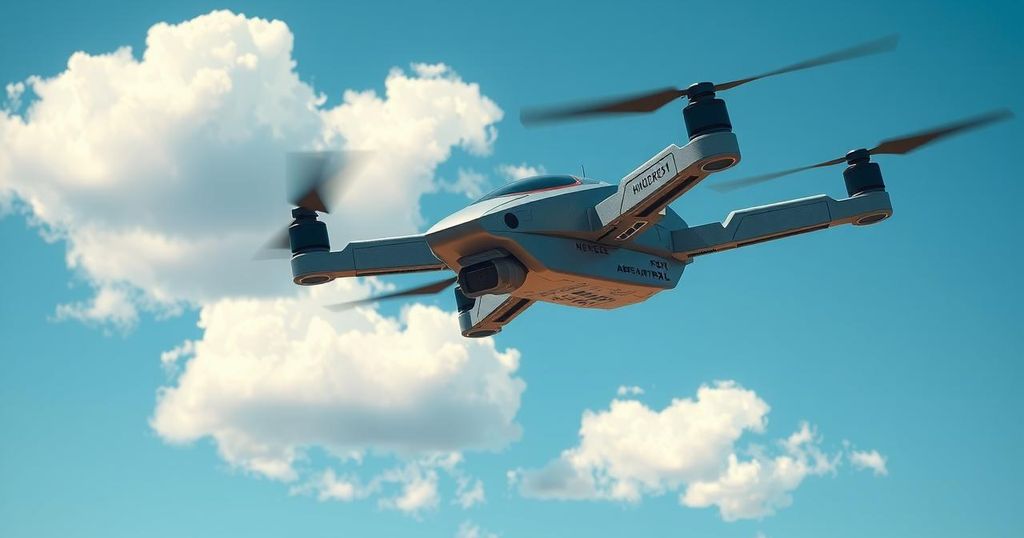Ukraine Develops Domestic Drone Interceptor Amid Diminishing U.S. Support

Ukraine has unveiled a domestically developed drone interceptor, the STING system, to counter Russian Shahed drones amid concerns of waning U.S. support. This technology aims to reduce dependence on costly anti-aircraft systems from allies. The STING interceptors have reportedly downed over 20 Shaheds in recent months, with production scaling up significantly. The initiative highlights Ukraine’s focus on internal defense innovation and international collaboration for future security.
In response to concerns about diminishing U.S. support, Ukraine has unveiled a newly developed drone system designed to intercept Russian Iranian-made Shahed drones. These drones have caused civilian casualties and damage as they are frequently deployed by Russia against Ukraine’s infrastructure. The introduction of Ukraine’s domestic military technology aims to counter this threat effectively.
President Volodymyr Zelenskyy recently showcased this interceptor drone in Kyiv during a meeting with Belgian Prime Minister Bart de Wever and defense industry representatives. The details of the interceptor system remain vague, but it has reportedly already intercepted over 20 Shahed drones within the past two months.
Developed by the non-profit organization Wild Hornets and known as the STING system, production began earlier this year and is being rapidly scaled up to meet the needs of the Ukrainian Armed Forces. Currently, components are primarily imported from China due to the lack of similar supplies in the EU, although efforts are underway to replace Chinese parts with local alternatives.
A recent cooperation agreement between Ukraine and Belgium stresses the need for joint production of defense systems, with Zelenskyy emphasizing the importance of this collaboration for broader European security. The STING interceptors represent a more cost-effective solution to combat Russia’s swarm of drones compared to traditional air defense missiles that typically rely on supplies from Western allies.
General Oleksandr Syrskyi, commander-in-chief of Ukraine’s military, acknowledged a decline in U.S. support but stressed the country’s advancements in military innovation and self-reliance. As Ukraine develops its own defense capabilities, air strategies that counter the relatively low-cost Shahed drones have become critical.
Despite being less effective compared to other military technologies, the Shahed drones have proven to be a significant threat, particularly due to their low operational cost and difficult detectability. The Institute for Science and International Security reported that Russia has launched approximately 15,000 Shahed drones against Ukraine since their introduction in August 2022, continuing to inflict damage across various sectors.
Ukraine’s introduction of its domestically produced drone interceptor reflects a strategic shift towards self-reliance in defense technology amidst concerns over U.S. support. The STING system aims to efficiently neutralize the threat posed by Russian Shahed drones, which have proven costly and damaging despite their low operational cost. Increased domestic production and international cooperation are pivotal to Ukraine’s military strategy in the ongoing conflict with Russia.
Original Source: www.cbsnews.com







